Contents
- 1 Discover Child-Safe Gardening Tools
- 2 Tools That Teach: The Educational Value
- 3 Gearing Up: Essential Tools for Little Green Thumbs
- 4 Making Safety a Priority
- 5 Gardening Projects to Spark Curiosity and Learning
- 6 Why Choose Gardening Tools Designed for Children
- 7 Where to Find the Best Child-Safe Gardening Tools
- 8 Frequently Asked Questions (FAQs)
- 9 Author
Key Takeaways
-
Child-safe gardening tools are designed to fit small hands and encourage safe, fun learning in the garden.
-
Age-appropriate tools not only prevent frustration but also promote independence and responsibility.
-
Educational value is significant, with gardening teaching children about plant life cycles and nurturing living things.
-
Look for tools made from durable, non-toxic materials with rounded edges for safety.
-
Starting with the right tools can instill a lifelong passion for gardening and an appreciation for nature.
Discover Child-Safe Gardening Tools
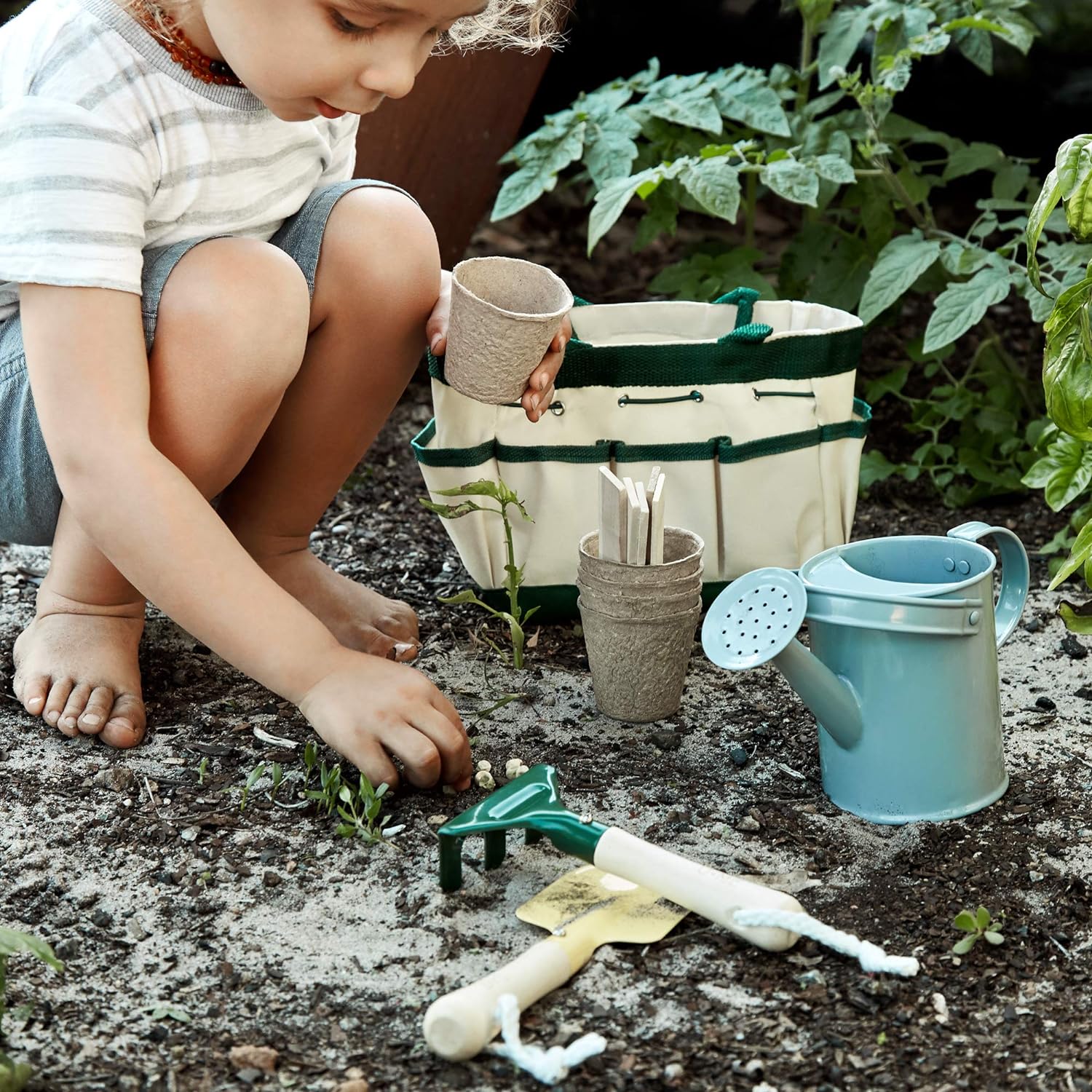
Child-Safe Tools Bring the Garden to Life
When we introduce children to the world of gardening, we’re not just teaching them how to plant seeds; we’re planting the seeds of responsibility, curiosity, and love for nature in their young minds. That’s why it’s crucial to equip them with tools that aren’t just miniature versions of adult tools, but are specifically designed with their safety and ergonomics in mind.
The Importance of Age-Appropriate Equipment
Imagine trying to garden with tools that are twice your size. Frustrating, isn’t it? For kids, the right size tools make all the difference. They need tools that fit their hands and match their strength. This way, they can dig, plant, and water with ease, making their gardening experience enjoyable and rewarding.
Tools That Teach: The Educational Value
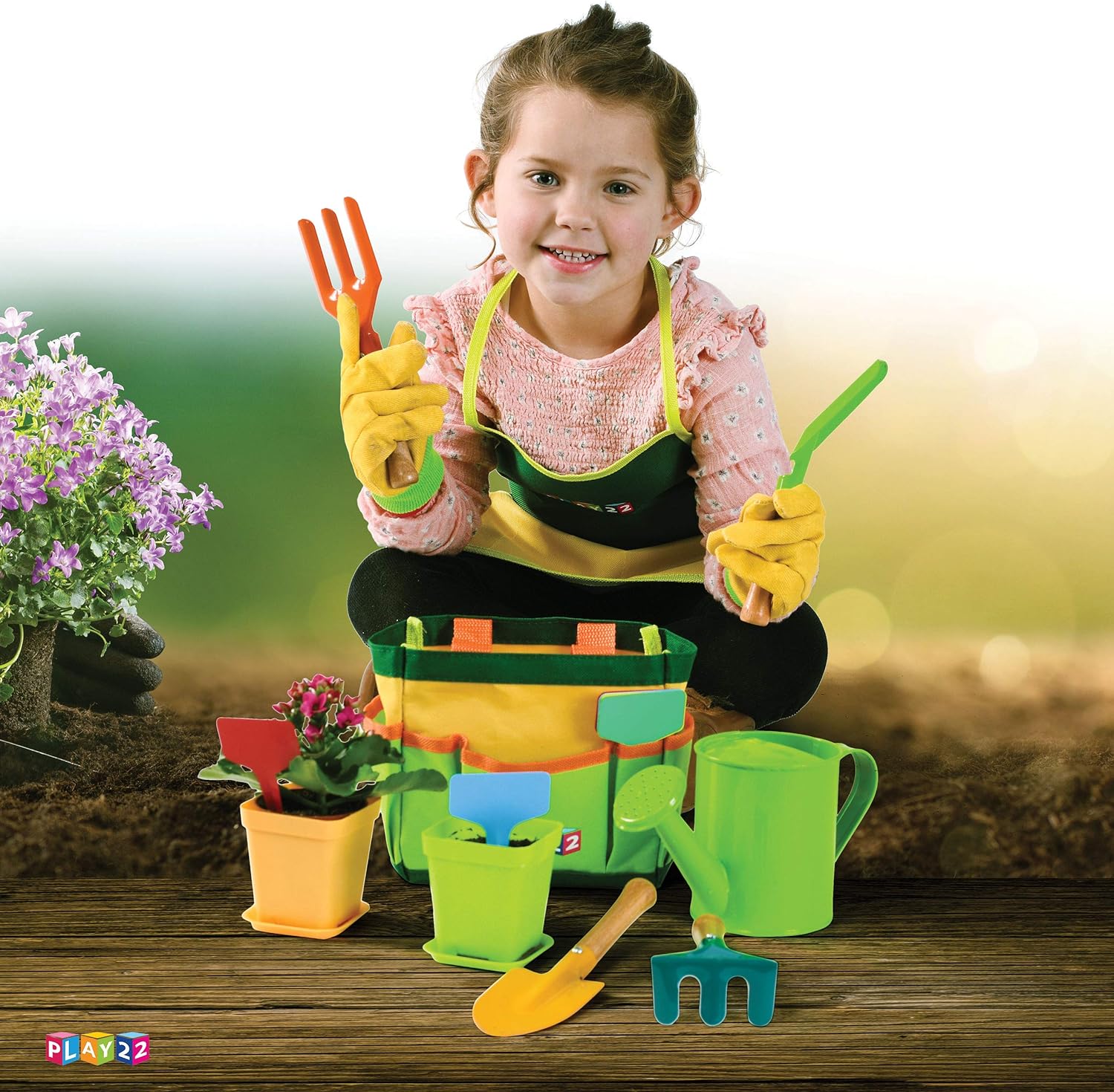
Gardening is more than just a fun activity; it’s a rich learning experience. Through gardening, children learn about the cycles of life, the importance of caring for the environment, and the satisfaction of seeing their efforts bloom. It’s a hands-on science lesson that unfolds right before their eyes.
Hands-On Experience Fuels Young Minds
There’s something magical about getting your hands dirty and watching things grow. For children, this hands-on experience is not only fun but also educational. They learn about different types of plants, how they grow, and what they need to thrive. These are lessons that stick with them because they’re actively involved in the learning process.
Gardening: A Lesson in Patience and Care
Most importantly, gardening teaches patience. Children learn that some things can’t be rushed and that careful, consistent care can lead to amazing results.
With the right tools and guidance, gardening becomes a practical classroom where children learn life skills that go far beyond the garden’s borders.
Gearing Up: Essential Tools for Little Green Thumbs
Before we jump into the garden, let’s make sure we have everything we need. A child’s gardening kit should include gloves to protect their hands, a small shovel for digging, a rake for clearing spaces, and a child-sized watering can. Each tool should be light enough for them to handle and designed for safety.
The Top 5 Child-Safe Gardening Tool Sets
Choosing the right tool set is essential. You want something durable, safe, and fun. Here are the top five sets that I’ve found to be perfect for young gardeners. For more insights on creating a child-friendly outdoor space, check out these family garden ideas.
-
The Green Thumb Kit: With its ergonomic design and vibrant colors, this kit is a hit among kids and parents alike.
-
The Little Planter Set: This set includes tools with soft handles and plastic ends that are both durable and sized just right for smaller hands.
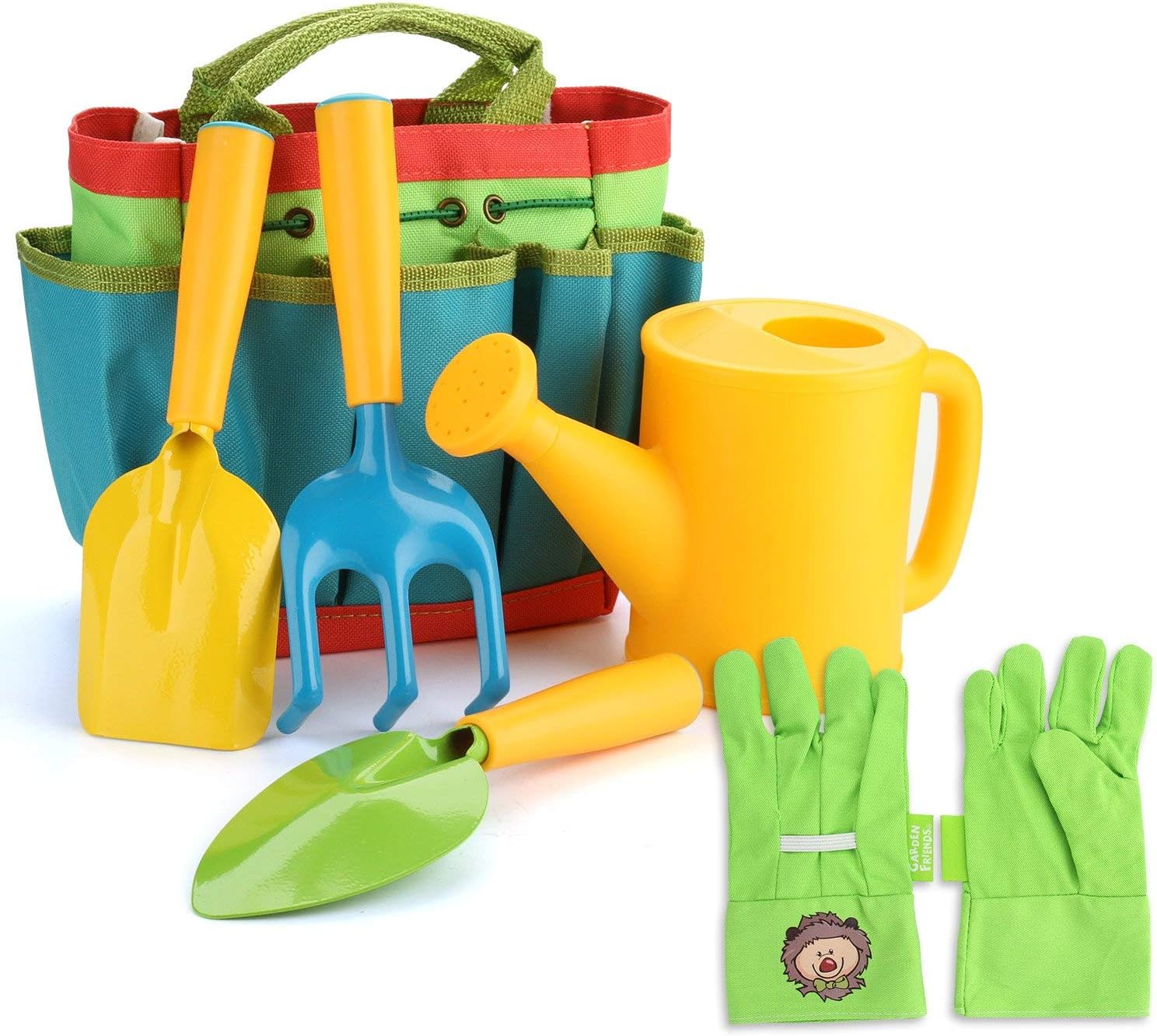
-
The Sprout and Grow Collection: Featuring tools that are easy to handle and made with non-toxic materials, this set encourages safe exploration.
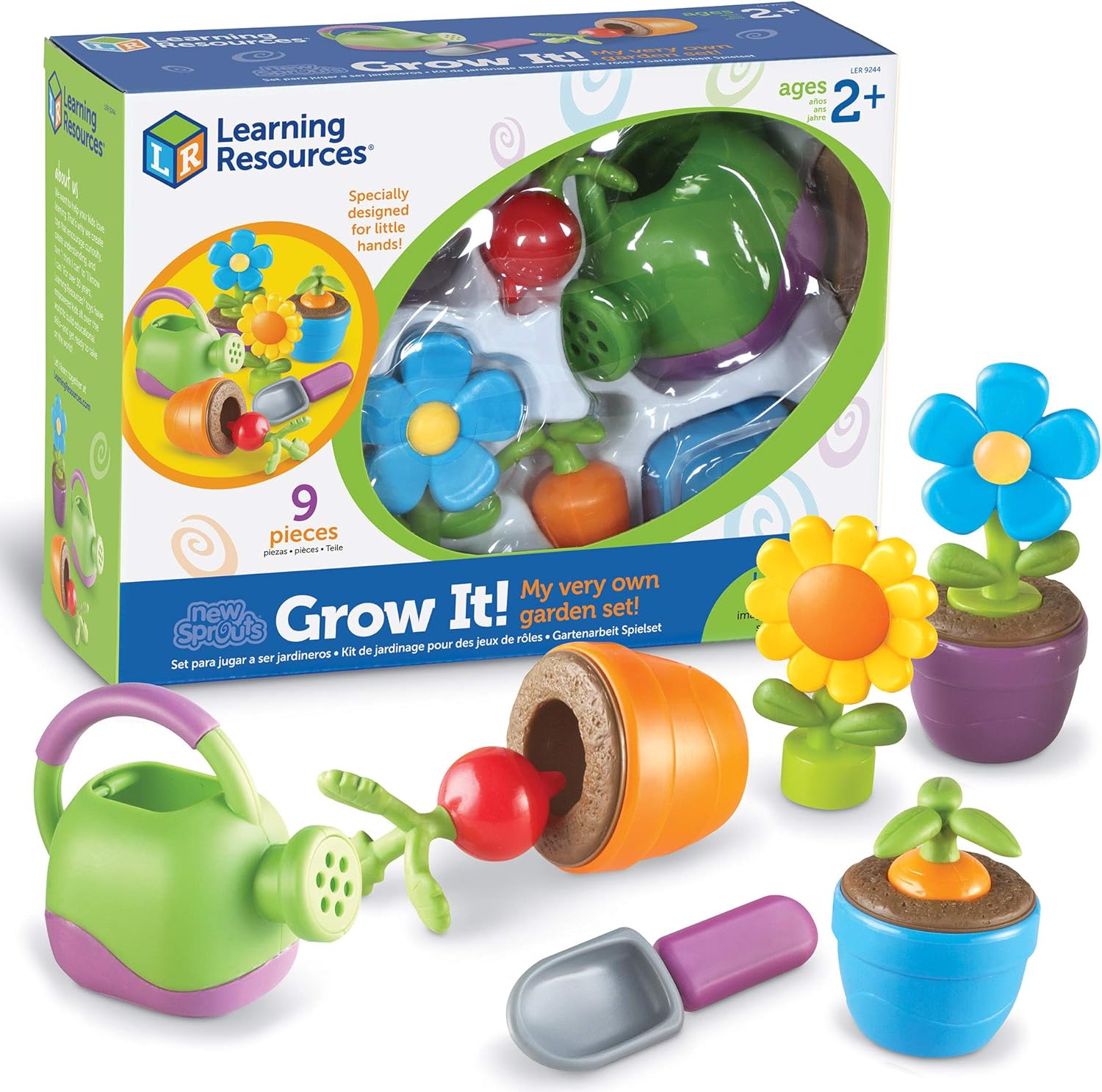
-
The Mini Gardener Ensemble: It comes with a handy bag for storage, and the tools are lightweight yet effective for all gardening tasks.

-
The Junior Grower’s Toolbox: Complete with gloves and a guidebook, it’s perfect for those looking to educate as well as entertain.
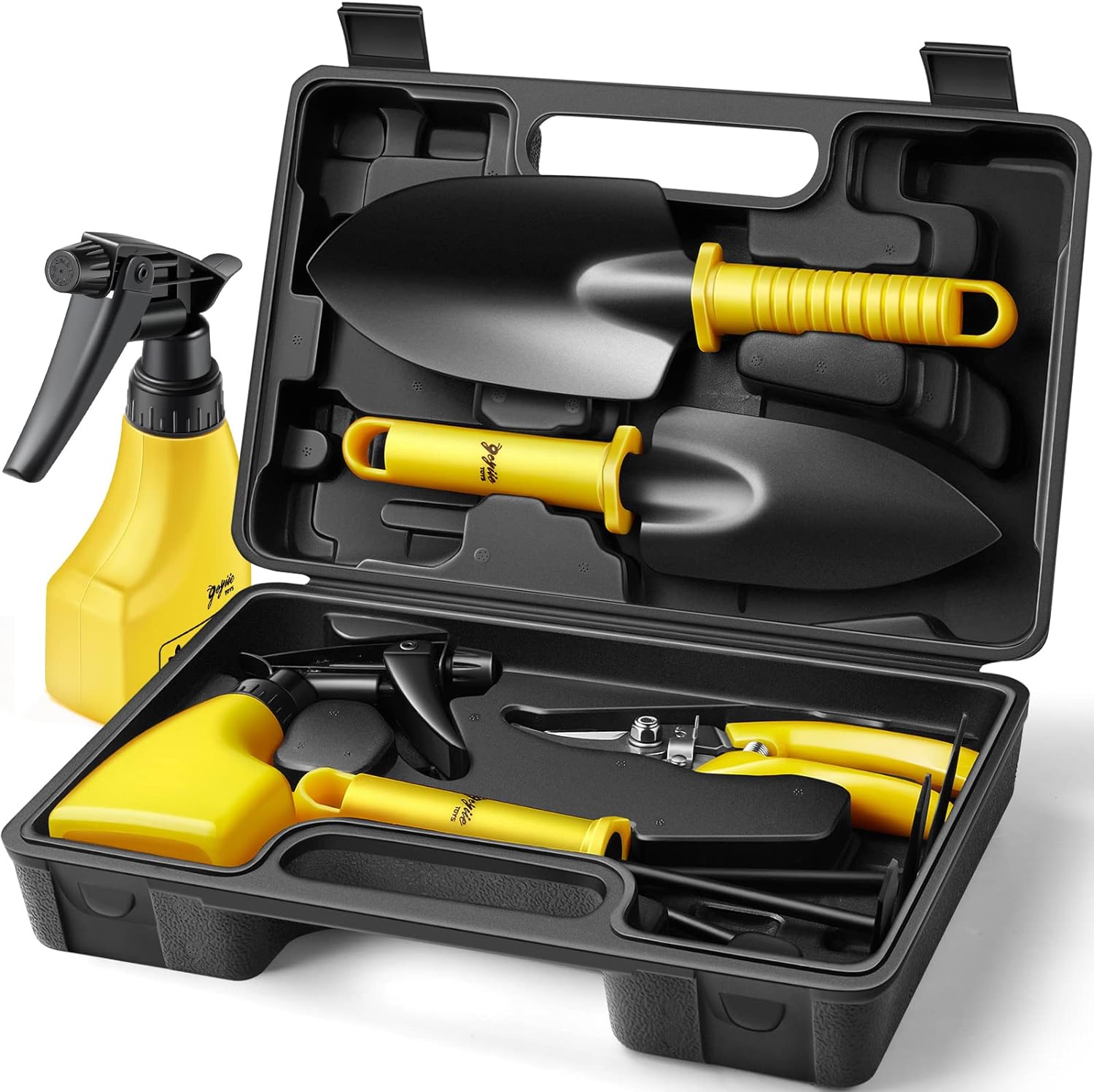
Each of these sets has been carefully selected to ensure they are age-appropriate and encourage a safe, hands-on learning experience in the garden.
Trowels, Rakes, and Shovels: Size Matters
When it comes to trowels, rakes, and shovels, the size and weight are crucial. A trowel should be light enough for a child to maneuver with ease, but durable enough to dig into the soil. Rakes and shovels should have shorter handles and smaller heads, tailored to fit comfortably in a child’s grip. This way, they can work alongside you in the garden, learning by doing, without the tools becoming a hindrance.
Gloves and Watering Cans: Functionality for Small Hands
Gloves are the first line of defense against dirt and minor scrapes, ensuring that the gardening experience is positive and pain-free. Look for gloves that are flexible, so they don’t impede your child’s natural movements. Watering cans should be lightweight when empty and manageable when full, with an easy-to-pour spout that gives little ones control over the water flow to avoid flooding their delicate plants.
Remember, the goal is to make gardening enjoyable and accessible. If the tools are easy and fun to use, kids are more likely to love their time in the garden and want to come back for more.
Storage Options: Keeping Tools Tidy and Organized
After the fun is done, where do all the tools go? It’s important to have a designated spot for your child’s gardening tools. A simple storage box or a tool stand can encourage them to put things away neatly, teaching organization and responsibility. Plus, it ensures that tools are kept in good condition, ready for the next gardening adventure.
Making Safety a Priority

The safety of our young gardeners is paramount. When selecting tools, we must ensure they are free from sharp edges and are made of materials that are sturdy yet safe. A tool that breaks easily can be more than just a nuisance; it can be a hazard. Therefore, investing in high-quality, child-safe tools is investing in our children’s safety and their gardening future.
Child-Safe Materials: What to Look For
When picking out gardening tools for kids, search for items made from durable plastics or metal with a coated finish to prevent rust. Avoid anything with splinters or toxic paints. Non-toxic, BPA-free materials are a must, as we all know kids have a tendency to touch their faces or forget to wash their hands.
Teaching Kids Safe Gardening Practices
Besides having the right tools, teaching kids how to use them safely is just as important. Show them how to carry sharp tools pointing downwards, how to use a trowel without flinging soil, and the importance of wearing gloves. These practices not only keep them safe but also instill a sense of garden etiquette.
And remember, supervision is key. While child-safe tools are designed to minimize risks, there’s no substitute for an adult’s watchful eye.
Gardening Projects to Spark Curiosity and Learning
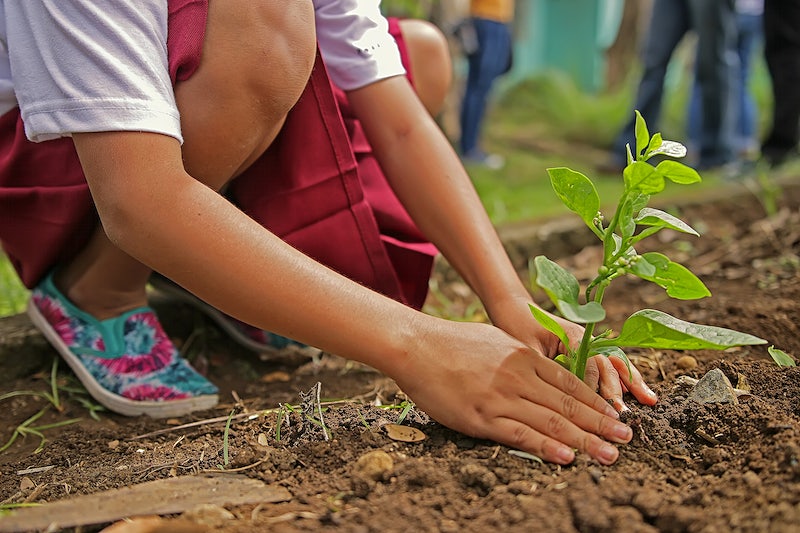
“Change grey to green | Education Nature …” from www.educationnaturepark.org.uk and used with no modifications.
Now that we’ve covered the tools and safety, let’s talk about the fun part—gardening projects. These can be a great way to engage your child’s curiosity and teach them about the natural world. Starting from seeds allows them to witness the miracle of growth, while creating a miniature garden can let their imagination flourish.
Starting from Seeds: A Journey of Growth
There’s something incredibly rewarding about growing a plant from a tiny seed. It’s a lesson in patience and care that can be fascinating for children. Together, choose seeds of flowers, vegetables, or herbs, and guide them through the process of planting and tending to their seedlings. As they watch their plants grow, they’ll learn valuable lessons about the environment and the food they eat.
Creating a Miniature Garden: Imagination Meets Nature
Another great project is creating a miniature garden. It could be a fairy garden, a small vegetable patch, or a container garden with a mix of plants. This gives children a sense of ownership and allows them to use their creativity to design a space that’s uniquely theirs. Plus, it’s a perfect opportunity to use those child-safe tools they’ve become so fond of!
These projects not only teach children about gardening but also about the ecosystems and how different plants and animals interact. It’s a living lesson in biodiversity right in your backyard.
Why Choose Gardening Tools Designed for Children
Choosing the right tools for your child is not just about making gardening easier—it’s about making it a meaningful part of their development. Child-sized tools help foster a sense of independence, allowing them to take part in gardening activities without constant help. This boosts their confidence and instills a sense of pride in their work.
Furthermore, when children have their own set of tools, they learn to take care of them, which teaches responsibility and the value of their belongings. These are not just tools; they’re instruments of learning and growth.
Design Elements That Appeal to Kids
Kids are drawn to bright colors and fun shapes, so it makes sense to choose gardening tools that are visually appealing to them. A trowel with a handle shaped like a ladybug or gloves with a dinosaur print can turn a simple gardening session into a playful adventure. These design elements not only make the tools more attractive but also more likely to be used.
Therefore, when selecting a set of gardening tools for your child, consider not just the practicality but also the aesthetic appeal. It could make all the difference in nurturing a young green thumb.
And when you’re ready to make that all-important purchase, consider checking out this recommended child-safe gardening tool set. It’s been handpicked for its quality, safety, and kid-friendly design, ensuring that your little one gets the best start on their gardening journey. For more fun activities to enjoy with your children in the garden, take a look at our guide on DIY birdhouse construction for endless garden fun.
The Long-Term Benefits of Starting Young
Starting young in the garden cultivates more than just plants; it grows curious, responsible, and environmentally conscious individuals. These early experiences can spark a lifelong passion for gardening and a deep appreciation for the natural world. By providing our kids with tools that are safe and designed just for them, we’re not only protecting them but also empowering them to take an active role in the stewardship of our planet.
Where to Find the Best Child-Safe Gardening Tools
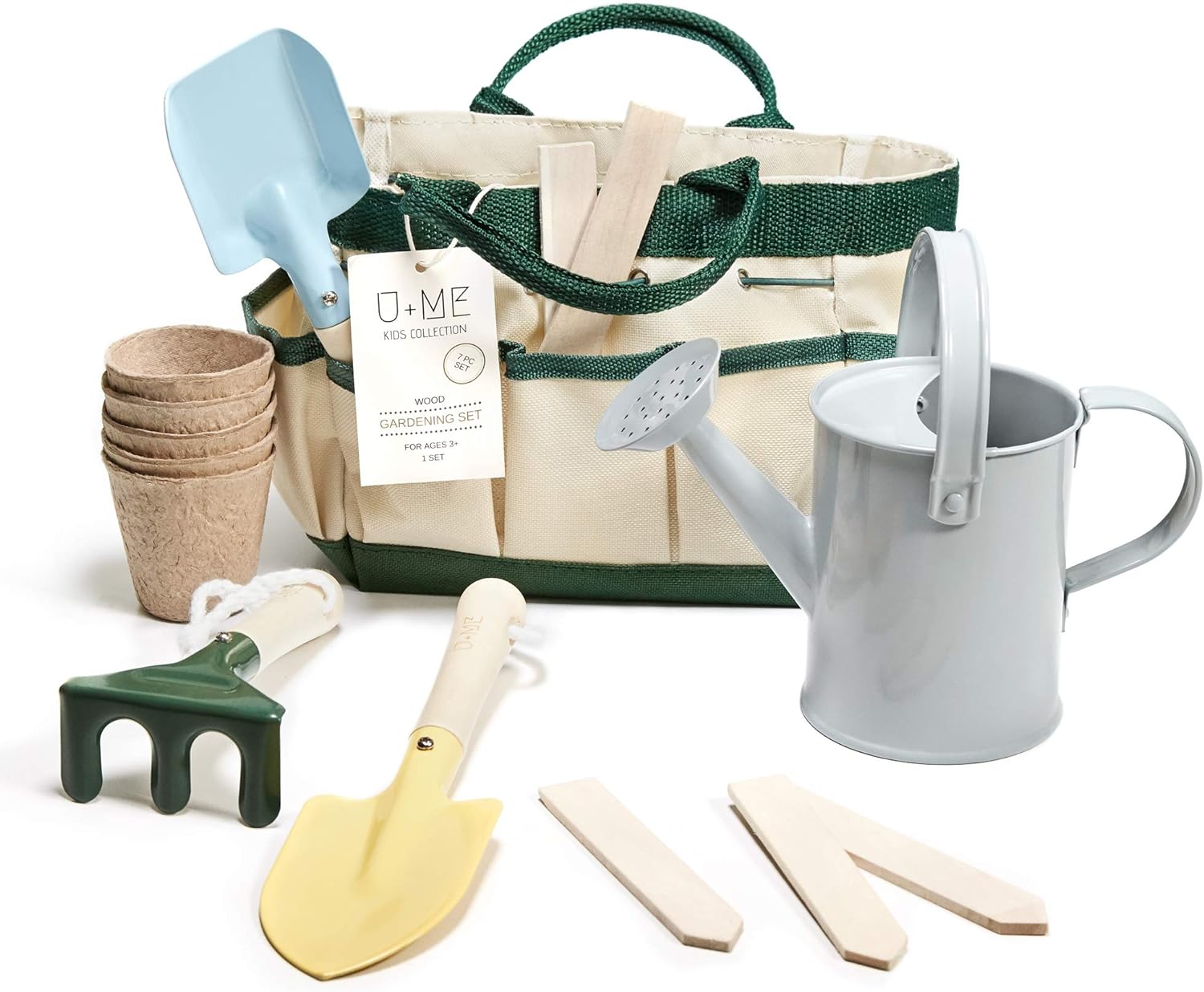
Finding the right tools for your young gardener is easier than ever. There are numerous options available that cater to the specific needs of children. From online retailers to local garden centers, you can find kits and individual tools designed with safety and fun in mind. But, if you want to ensure you’re getting a trusted, quality set that children will love, I’ve got a recommendation for you. For a hands-on learning experience, consider exploring options for vertical gardening, which can be a fun and space-saving way to engage children in gardening.
Recommended Child-Safe Gardening Tool Sets for Purchase
If you’re looking to buy a child-safe gardening tool set that combines safety, durability, and kid appeal, check out this set on Amazon. It’s a popular option among parents and educators alike, and it’s been thoroughly tested to ensure it meets the highest standards of safety and usability for kids.
Frequently Asked Questions (FAQs)

Can Gardening Tools Be Educational for Children?
Absolutely! Gardening tools can be incredibly educational for children. They not only learn about the science of plants, soil, and ecosystems but also develop fine motor skills, learn about responsibility through caring for their plants, and understand the value of patience and consistency. Discover more through our guide on family garden ideas to inspire your young ones.
What Age Should Children Start Using Gardening Tools?
Children can start using gardening tools as early as three years old with proper supervision. It’s essential to provide them with tools that are suitable for their age and size to ensure a safe and enjoyable experience.
How Do Gardening Activities Help with Child Development?
Gardening activities offer a multitude of benefits for child development. They enhance sensory and motor development, encourage healthy eating habits, teach scientific concepts, and promote relaxation and stress relief. Furthermore, gardening together can strengthen family bonds and encourage cooperative play.
What Safety Features Should I Look for in Children’s Gardening Tools?
When shopping for children’s gardening tools, prioritize features like rounded edges, non-toxic materials, and ergonomic handles. Tools should be lightweight yet sturdy enough to be used effectively in the garden.
Are There Gardening Tool Sets Specifically for Toddlers?
Yes, there are gardening tool sets designed with toddlers in mind. These sets typically include tools with large, easy-to-grip handles and playful designs to engage the littlest gardeners. They are made with extra safety features, such as rounded edges and soft materials, to ensure a safe introduction to gardening.



